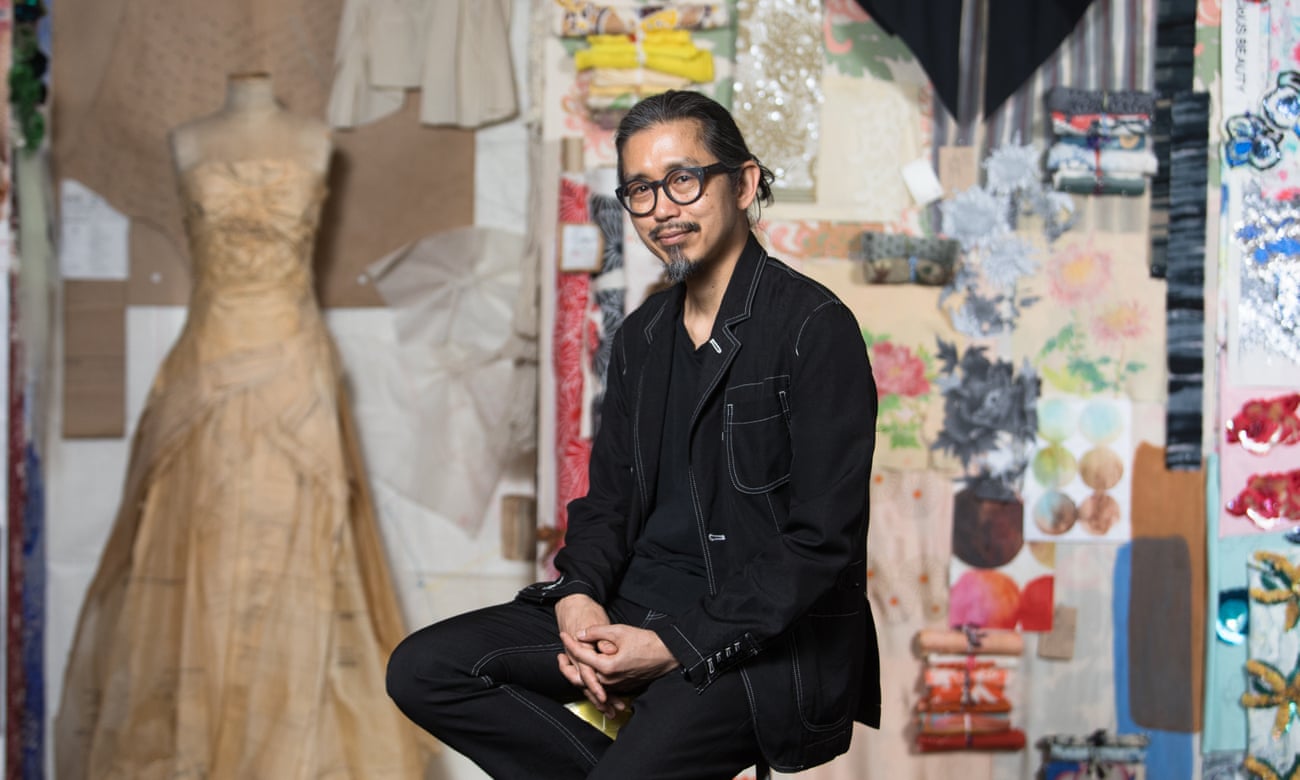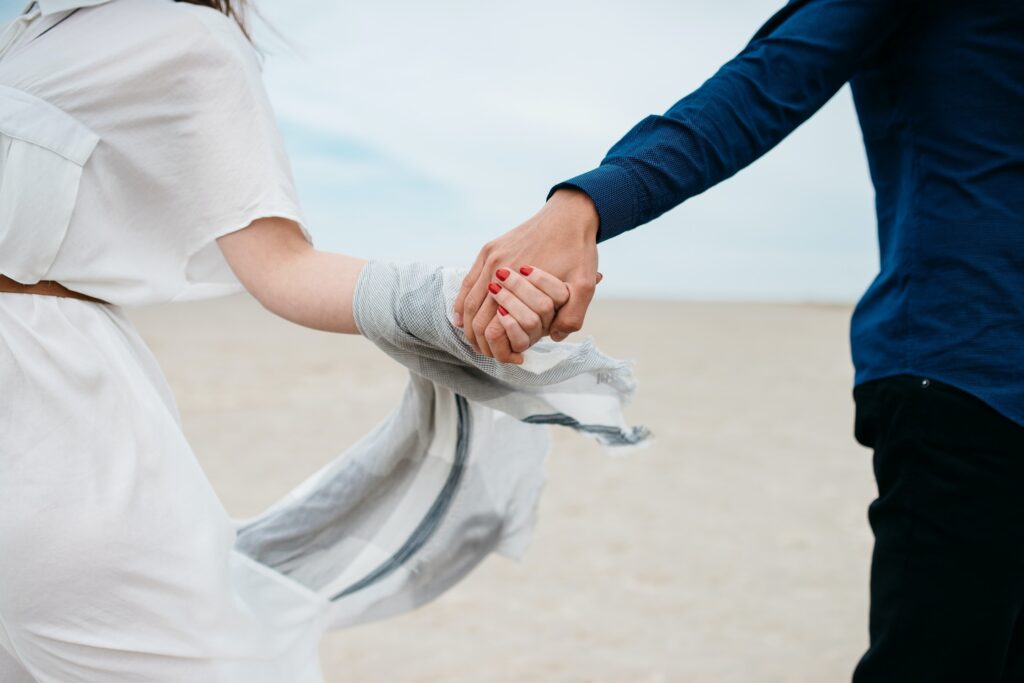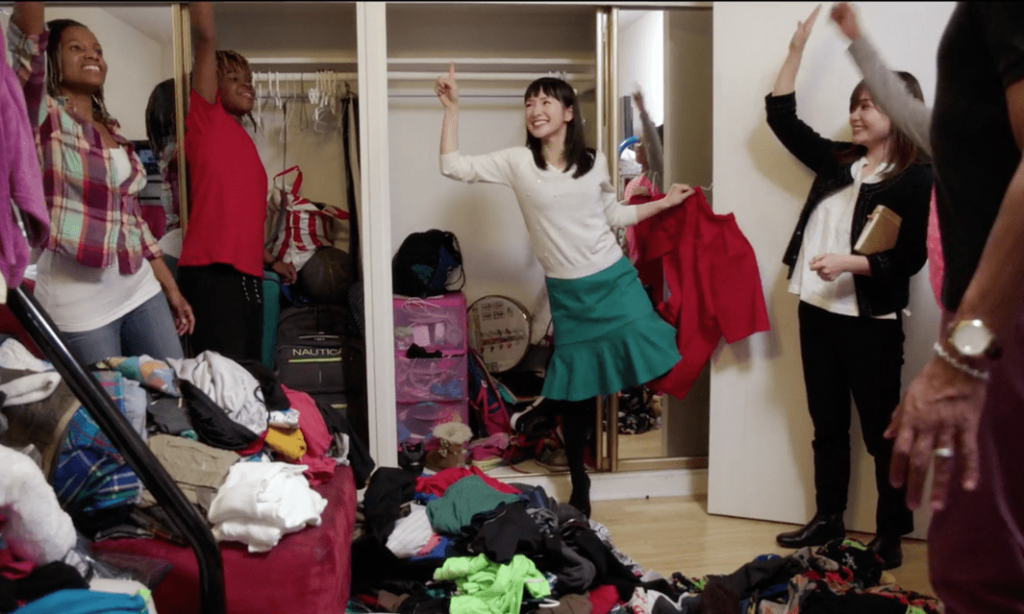When I arrive, Akira Isogawa is halfway up a ladder adjusting one of his garments on display at Sydney’s Museum of Applied Arts and Science (MAAS). Fellow installers cluster around him, listening intently to his instructions. He’s dressed entirely in black, from his round black-rimmed glasses down to his long flowing trousers, and his black hair streaked with silver is folded into a neat ponytail.
We move to a studio area next to the exhibition hall, where inspired museum visitors will be able to create their own masterpieces. Isogawa is softly spoken and laughs frequently at himself, but as he directs a colleague installing a nearby mood board, it’s clear he knows exactly what he wants.
Twenty-five years is a long time in fashion, particularly in Australian fashion – and labels and their designers rise and fall fast. Isogawa has outlasted many of his flashier contemporaries, including those with bigger stores and even bigger budgets. Yet if you ask him about the secret to his longevity, his answer is simple: patience.
This month a large-scale retrospective of the Japanese-born, Australian designer’s work opens at MAAS, filled with more than 200 garments that demonstrate the 25-year evolution of his beautiful, distinctive designs. There’s colourful intricate womenswear, cleverly constructed menswear with a punk edge, and dazzlingly feminine bridal gowns, each piece exploring the line between fashion and art.
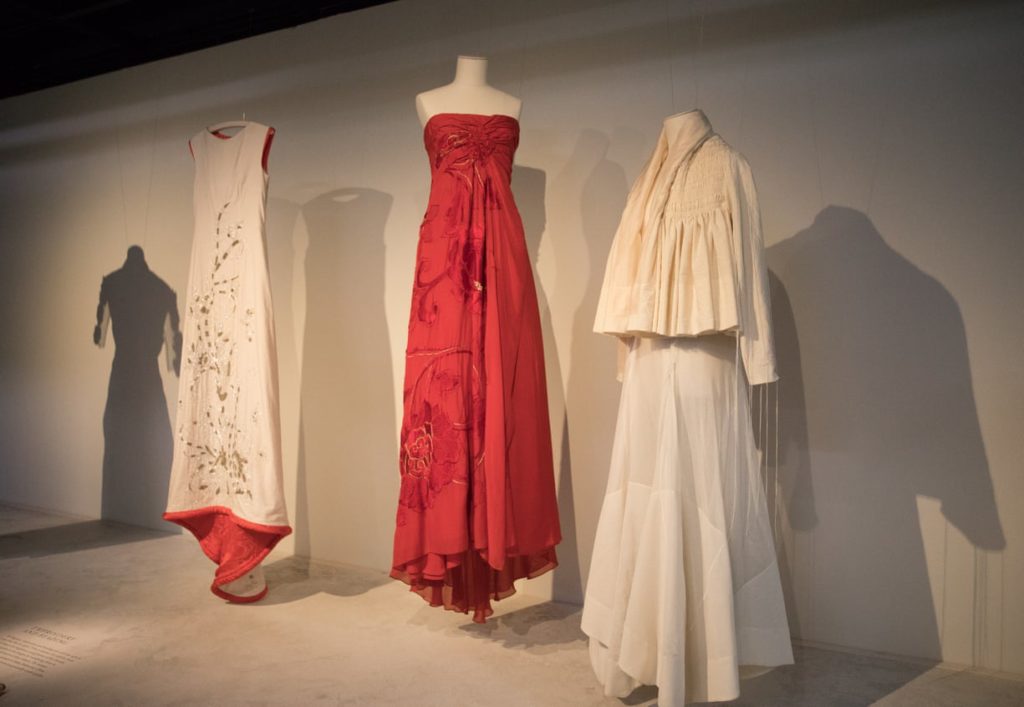
Born in Kyoto, Isogawa moved to Sydney in 1986 when he was 21, with little money and no English. Like so many international backpackers, he fell in love with Australia after travelling across the country. He studied fashion design at East Sydney Technical College and then, in between working as a tour guide for Japanese tourists, he worked on his designs and opened his first shop in 1993.
It took him years to find his own style. “I do not believe in success which happens within six months or three months or when you start your label. I think it’s good to spend the time and then persevere and stay focused until you find your own voice.”
Growing up in Kyoto, Isogawa was fascinated by the colours and construction of traditional Japanese kimonos. When he founded his label, he brought old family kimonos back to Sydney and deconstructed them, making dresses from the aged silk of their linings. Rediscovering the kimono helped him to define his signature blend of traditional Japanese style with Australian ease.
The fact that kimonos can appear outwardly somber but are filled with glorious colour once opened also appealed to him – and is something he uses in his own designs. “The only person who knows what’s going on [within] the garments is yourself. No one knows, so you’re keeping some sort of secret luxury, voice or feeling that stays with you.”
It was his first solo collection, presented at Australian fashion week in Sydney in May 1997, that brought him global attention. Legendary buyer Joan Burstein, who launched the careers of designers John Galliano, Alexander McQueen and Christopher Kane, swooped in and bought the lot for her Browns boutique in London. Although he says now it was a case of being in the right place at the right time, this international affirmation filled him with confidence.
He quickly gained fans and customers, and since 1998, he has showed his collections in Paris twice a year, as well as resort collections in Sydney. Former Vogue Australia editor Kirstie Clements, who watched his rise from the beginning, describes him as a true creative – and a gentleman. “He has always had his own signature and works to improve and perfect it endlessly. He is passionate about fabrics, techniques, colours, construction. His love of the work itself sets him apart.”
Actor Cate Blanchett owns a number of his pieces, which she has worn countless times. In the book accompanying the exhibition, she describes them as “precious works of art”. Philanthropist Dr Gene Sherman also collects his work. Her favourite is a three-quarters length, reversible silver-grey jacket: “One side is super feminine with a layer of rippling light grey organza billowing over a plain light weight wool background. Worn inside out (either way works perfectly), the piece, still billowy in shape, presents a more austere surface. Iron grey with a touch of playful pleated detail at the back.”
She says the jacket summarises Isogawa: “Playful yet serious, feminine with a touch of austerity, beautifully crafted and timeless.”
As we walk through the exhibition, Isogawa points to the pieces that are important to him. He shows me the oldest item in the exhibition: a shellac-ed silk top that ended up in the bin until collaborator Christiane Lehmann rescued it. There’s also the delicately embroidered and beaded gown dubbed “The dress that saved Sydney” by The Australian’s fashion editor Marion Hume in 1999. Legend has it Hume and the international buyers who flocked to that year’s Australian fashion week were largely unimpressed by the collections shown – except for Isogawa’s work.
The pieces in the collaborations section, which include his wispy romantic costumes for the Sydney Dance Company, are his personal favourites. They bring back happy memories, he says. “Being inspired and also hopefully inspiring them as well.”
Isogawa believes the reason he’s still in business is because he stayed away from fast fashion. “I believe in slow fashion. I prefer to invest money in something that’s worthwhile and will last, not only physically, materialistically but style-wise. Style should last. I don’t think that when you invest such money, you wouldn’t expect to have that style to be dated within a year or two. I feel that’s a side of fashion that I like to pursue with my own career. I think that’s probably why, it made me keep going without feeling burnt out.”
That’s also how he thinks about the wastefulness of fashion. “Buy less. It’s a crazy thing to say – I should be saying buy more but I do not buy a lot of clothes myself … Buy wisely so therefore you produce less waste.”
The industry is more competitive than when he started, he says, and the pressure to come up with something new is more intense, but he doesn’t heed it at all. “I’ll die if I’m part of this game, it’s so not me … I can’t compete with who is the fastest or who can come up with a new dress more quickly. I’m not competing with anyone else.”
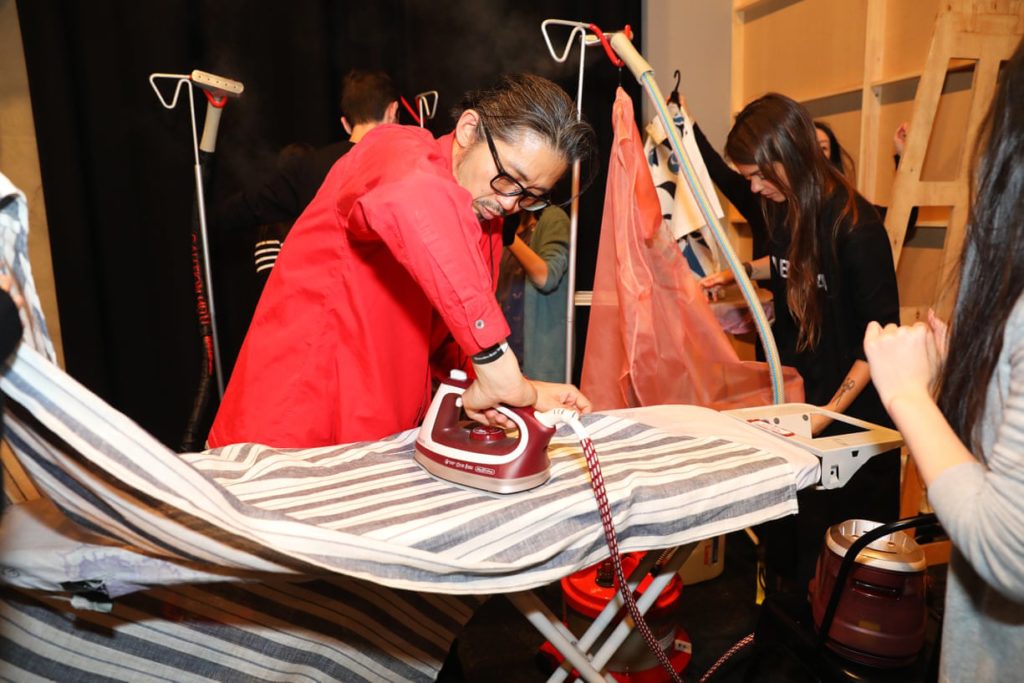
Isogawa has remained independently owned throughout his career, which takes some doing in the cutthroat fashion world with its high overheads. It’s not that he hasn’t been open to outside investment; he just hasn’t found the right partner. “I’m quite patient [so] someone who is interested in investing in my company also has to be patient, and I’d expect them to wait rather than trying to find a quick return.”
There have been numerous accolades including the inaugural Australian Fashion Laureate in 2007 and the fashion excellence award in 2006. He was featured on an Australian legend commemorative stamp in 2005. But Isogawa doesn’t feel like he has achieved a lot. And he still finds flaws in his work. “I’m actually quite a critical person but that definitely keeps me going, because there are things to fix,” he says with a laugh.
His humility is well-known and it’s only when I push that he concedes that he’s proud of what he’s achieved. “It’s not my character to acknowledge to everyone that ‘Oh I am good’ or ‘Oh look at this, isn’t it a great job’. So it’s difficult. But when I go home, I quietly tell myself that actually I’ve done good,” he says, adding quickly. “But I won’t tell anyone.”
As we leave the exhibition, I ask what he’d like an upcoming fashion student to take away from it. “I hope a student would feel inspired enough to enquire into that idea of finding your own voice, like I did and I continue to do. I haven’t given up yet, I’m still working on it every day.”
The Akira Isogawa exhibition is at Sydney’s Museum of Applied Arts and Science from 15 December 2018 until 30 June 2019
Published in Guardian Australia ‘Precious works of art’ – Akira Isogawa’s unique fashion celebrated in retrospective
